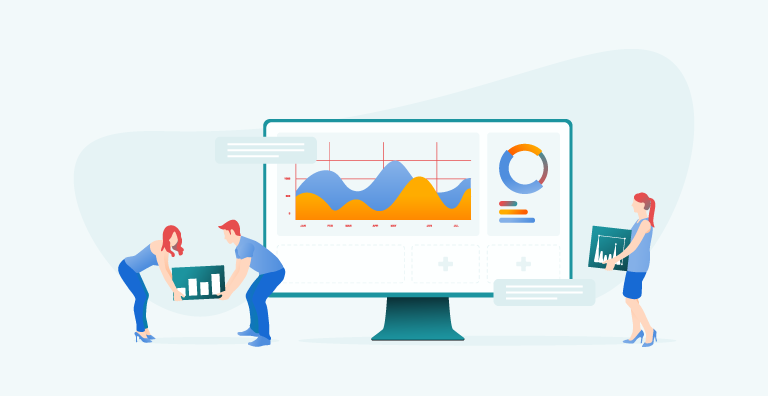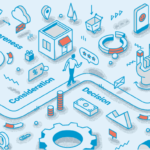What is customer experience? The customer experience is driving where, when, and how today’s shoppers engage with retailers. Whether it’s in-person or online, a memorable experience can lock in customer loyalty, increase purchasing, and create positive word-of-mouth. At the same time, nothing changes a customer’s behavior faster than a poor customer experience.
In the highly competitive retail market, 64 percent of shoppers rank customer experience as more important than price. And, after just one bad experience, more than half of customers say they won’t do business with that company again. Clearly, delivering a winning customer experience can be a high-stakes game. Savvy retailers are using their point-of-sale (POS) system to do more than ring up sales. They’re digging into their data and finding 10 fresh ways to turn insights into a customer experience advantage.
1. Get the big picture.
Today’s POS solutions are designed to serve as a hard-working, centralized data hub that brings customer, sales, and inventory data together. Optimize your POS system’s integrated reporting capabilities to gain views into customer trends, sales volume detail, inventory management, and marketing engagement. Automate key reports to keep your finger on the pulse of your business and make data-driven decisions to enhance the overall customer experience.
2. Profile and personalize.
Memorable customer experiences are personalized. Customers expect tailored experiences and, as a result, are 110 percent more likely to buy additional items. Get to know your customers by capturing detailed profile data over time. Along with profile basics like contact information, birthday, and past purchases, include intel about favorite brands and styles, hobbies, and family members. Choose a POS system that makes customer profile data easily accessible so your sales team can use it to seamlessly enhance in-store and check-out experiences.
3. Spark action.
Leverage customer insights to make personalized recommendations. Suggest complementary items based on a customer’s past purchases. Create a customized bundle offer that pairs regular purchases with suggested items at a discount. Take your recommendations to the next level by sharing expert insights about how to care for or clean a purchased item or suggest additional ways to use a product. This type of value-add information does more than keep your store top of mind. It also helps build long-term loyalty.
4. Reinvent inventory.
Your POS is a goldmine of inventory insights. Regular reports will keep you up-to-date on what’s in stock, best-selling items, and underperforming products. Plus, your day-to-day inventory management decisions have a direct impact on customer experience by ensuring you have what your customers want to buy when they want to buy it. Accurate inventory forecasting – calculating the inventory needed to meet customer demand – is crucial.
Related: Inventory Forecasting: A Guide to Accuracy and Getting Started
5. Flex your footprint.
Insights gleaned from best-seller reports or understanding which products are most likely to be purchased by first-time customers can inform the physical layout and merchandising within your brick-and-mortar store. If your POS data identifies items frequently purchased together, showcase the connection in how the products are displayed in-store. Or, if year-over-year reports show spikes in certain products at certain times, drive more sales by moving the item to a prime location (and upping the inventory)!
6. Optimize omnichannel.
One of the most important things your POS system should do is integrate your online and in-store data, so you’re able to deliver a seamless omnichannel experience for your customers. Even before the COVID-19 pandemic, shopping was rarely a single-channel experience. Buyers explore potential purchases on their smartphone, shift to in-person to view or test the product, and often go back online to complete the purchase or buy additional, complementary products. Customers expect retailers to recognize the different interactions and bring it all together for them, whether they’re online or off. COVID-19 made omnichannel even more essential, with customers purchasing online and then going to the store for curbside pick-up.
Related: Customer Expectations: Why Retailers Need to Deliver an Omnichannel Experience
7. Monitor the firsts.
Tracking and analyzing new customer interactions is an excellent way to increase customer understanding and establish a strong foundation for long-term customer relationships. Monitor first-time customer purchases to gain insights to guide marketing campaigns or packaged offers. And make sure to capture baseline profile information at the time of first purchase, so you’re able to reach out to new customers with a personalized thank you note and special discount they can use on their next visit.
8. Build loyalty.
Your data is a vital tool for building and strengthening customer loyalty. Set up a regular report within your POS system to give you an ongoing view of your top customers and their purchase activity. This gives you insights into behavior shifts and informs strategic decisions. Your POS data is also essential for defining and implementing your store’s loyalty program, which is an integral part of the customer experience. A strong loyalty program not only rewards customers for their continued business, but it also incentivizes them to make additional purchases and refer their friends. Loyal customers are extremely valuable in today’s retail environment. Increasing loyalty by just five percent can boost your profits anywhere from 25 to 95 percent.
Related: Is Your Customer Loyalty Program Working Hard for Your Business?

9. Maximize marketing.
Data drives targeted marketing. The better your data is, the more precise and personalized your marketing can be. Leverage your POS data to sort customers by spend level, product preferences, or purchasing activity. Analyzing these types of reports provide invaluable insights. Turning the insights into targeted marketing campaigns can drive increased sales. For example, tap into your data to identify dormant customers who haven’t purchased in a while, and create a targeted promotional offer to re-engage them.
10. Don’t forget training.
Your POS solution is a valuable tool. Make time to train your team, so they’re able to make the most of the data, reports, and customer profiles it provides. At the customer level, your POS data helps salespeople personalize customer interactions and deliver memorable experiences. And at the overarching report level, the team gains an important view of trends and behavior shifts to increase their customer understanding. Are you harnessing the power of your POS data? Our guide, Data-driven Decisions: The Definitive Guide for Retailers, provides helpful insights into how to leverage your data to enhance customer experiences, drive increased sales, and improve profit margins. Contact us for a demo to explore what’s possible with POSIM.











